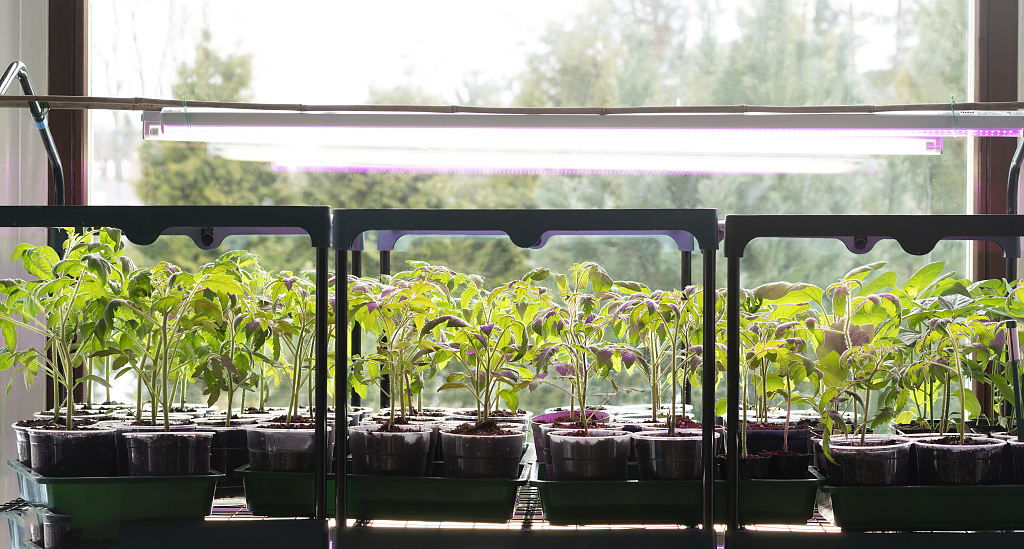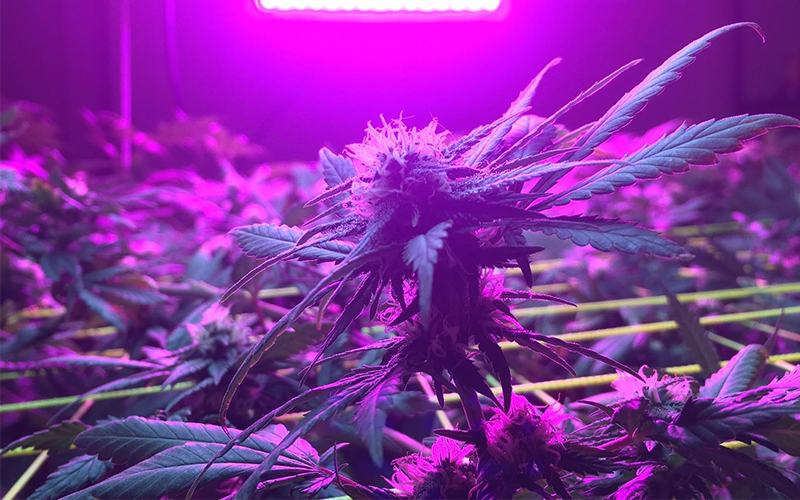Short ultraviolet ray has inhibitory effect on the growth of plants, can prevent plants from growing, has the effect of disinfection and sterilization, can reduce plant diseases. Visible light is the raw material for green plants to produce organic matter through photosynthesis. The chlorophyll of green plants absorbs the most red and orange light, followed by blue and violet light, and the least yellow and green light. Far infrared produces heat effect and provides heat for crop growth and development. Under infrared irradiation, fruit ripening tends to be uniform. Near infrared has no use for crops.
Therefore, in our rapid propagation and hydroponic process, red light is used to supplement light to achieve the maximum utilization rate.

1. In the process of stem growth, comparing the effects of natural light and red light on plant growth, chlorophyll content under natural light decreased first and then increased. However, the chlorophyll content under red light was higher than that under natural light, indicating that red light significantly promoted the formation of chlorophyll, and this result became more obvious with the increase of culture days.
2. The plant grows better under red light, which may be due to the higher content of chlorophyll in the plant, more vigorous photosynthesis and more carbohydrate synthesis, thus providing sufficient material and energy for the growth of the plant. Let's take a look at the content of chlorophyll and soluble sugar under natural light and red light.
3. The soluble sugar content on the 7th day of culture was lower than that on the 13th day, and it decreased more under red light than natural light, and the rooting of stem segment under red light was earlier than that under natural light. After 13 days, the soluble sugar content under red light was higher than that under natural light, which may be related to the higher chlorophyll content and more vigorous photosynthesis under red light.
4. NR activity in stem segment under red light is significantly higher than that under natural light, indicating that red light can promote nitrogen metabolism in stem segment.

In conclusion, red light can promote root formation, chlorophyll formation, carbohydrate accumulation, absorption and utilization of plant stem. In the process of rapid propagation, the application of red LED plant lamp to supplement light has obvious effect on promoting the rapid rooting of various plants and improving the quality of seedlings. LED plant lamp professional research plant lighting distribution, and the maximum simulation of natural light, for the plant photosynthesis to provide accurate spectrum range, to provide customers with more comprehensive plant growth lighting solutions for the purpose of the company, for the majority of consumers and users to provide high-quality products and services.
Author 2025-06-12
Hishine Group Limited Will Meet Customers In Mexico City.Hishine is thrilled to announce its participation in Expo Eléctrica International 2025, Latin America’s premier trade fair for power and lighti...
Author 2025-05-12
Our recent business trip to Saudi Arabia proved to be a pivotal step in strengthening partnerships and exploring opportunities in the Kingdom’s rapidly growing energy and lighting markets. Below are t...